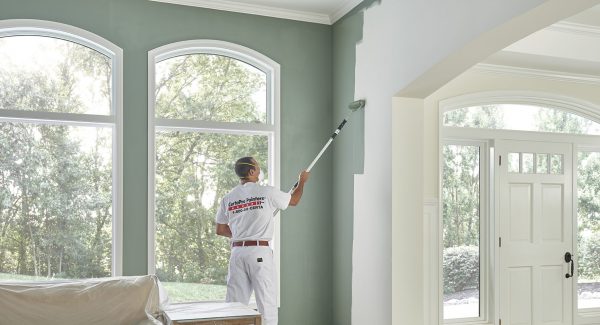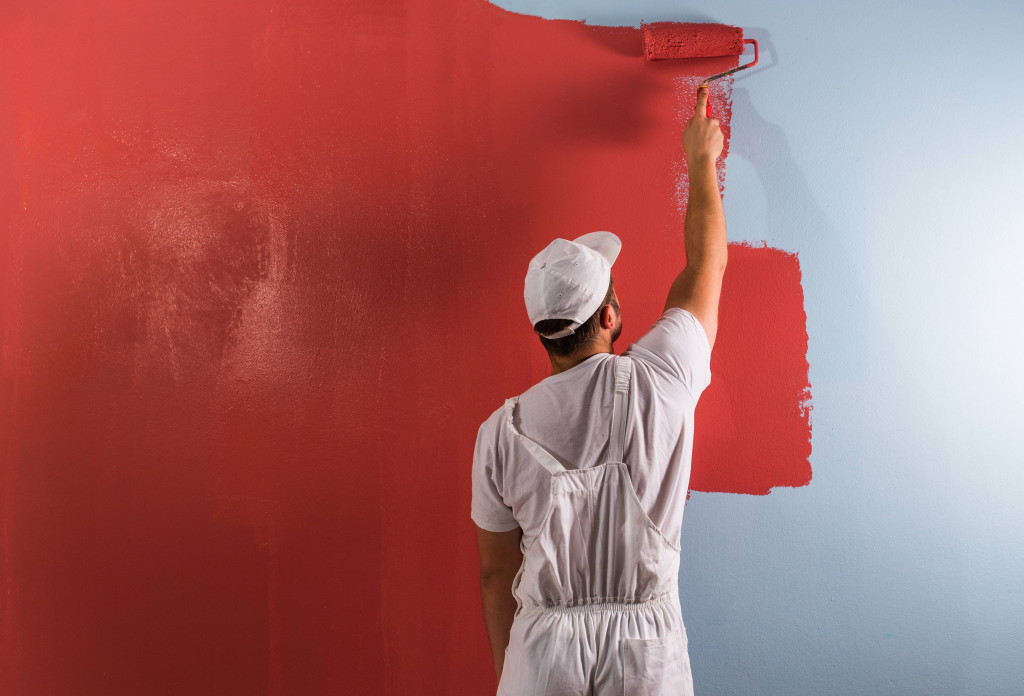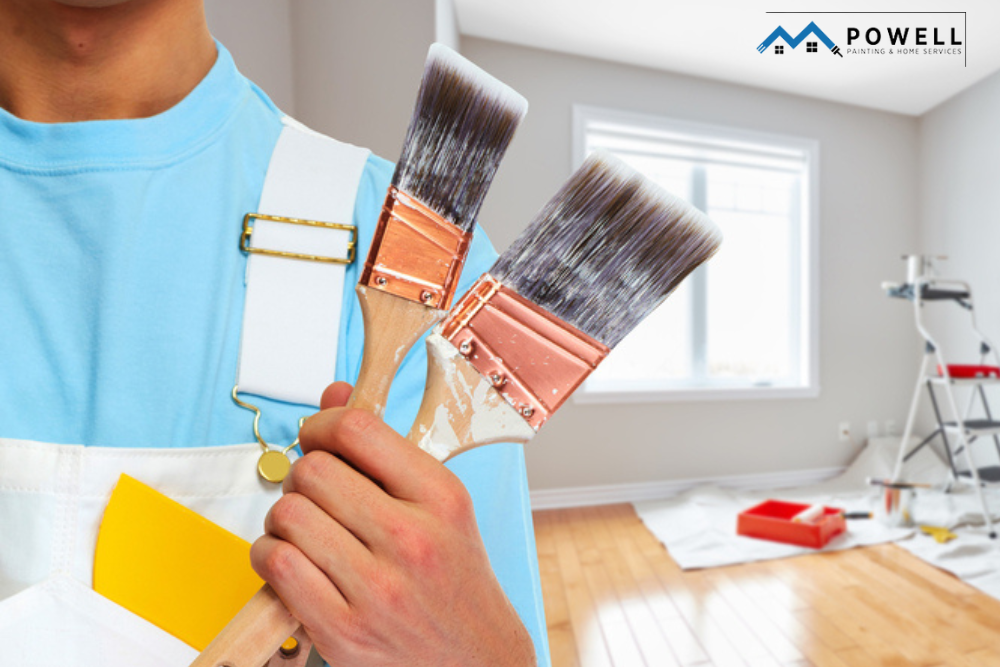Remain Ahead With New Paint Trends: Blending Strategies for Modern Interiors

The Increase of Shade Gradients in Interior Decoration
As designers significantly look for innovative ways to enhance spaces, the surge of color gradients in interior layout has actually gathered considerable attention. This technique, defined by the smooth change in between two or more shades, enables a vibrant aesthetic impact that can transform an ordinary area into a lively setting. Color gradients can evoke feelings, affect understandings of space, and create focal factors, making them a flexible choice for numerous layout styles.
The application of slopes prolongs past wall surfaces; they can be effectively used in furniture, fabrics, and accessories. Designers usually trying out differing shades to accomplish depth and intrigue, attracting a variety of appearances from minimalist to eclectic. Additionally, the flexibility of slopes enables their usage in both commercial and household setups, dealing with varied clients. As patterns evolve, making use of shade gradients symbolizes a shift in the direction of more customized and meaningful interior areas, reflecting specific tastes and lifestyles.
Accepting Ombre Strategies for a Dynamic Look
Ombre strategies have actually emerged as a charming choice for those wanting to include deepness and motion to contemporary interiors. This slope effect shifts efficiently from one color to another, producing a visually striking centerpiece in any room. Designers appreciate ombre for its adaptability; it can be related to wall surfaces, furniture, or even ornamental accents, enabling distinct expressions of style.
The technique works especially well with soft tones, offering a tranquil setting, while vibrant colors can stimulate an area. Homeowners can trying out different shade combinations, choosing contrasting tones for a significant impact or unified tones for a refined result. The application of ombre is not limited to a solitary wall; it can prolong across a space, enhancing the assumption of room and light.
As a contemporary trend, ombre techniques satisfy varied preferences, permitting people to individualize their insides and welcome creative thinking in their design strategy. benjamin moore paint store corpus christi.
Distinctive Walls: Layering Paint for Depth and Passion
Textured walls can substantially boost the visual allure of contemporary insides by adding depth and passion. Methods for creating appearance, thoughtful shade mixes, and the right tools for layering are essential elements in achieving this effect. Exploring these elements allows for a customized and dynamic method to interior layout.
Strategies for Texture Production
Creating aesthetic passion in interior rooms commonly depends upon the artful application of texture. Various techniques can be used to achieve this, such as sponging, cloth rolling, and stippling. Sponging includes using a damp sponge to apply a second color over a base layer, developing a soft, mottled impact. Rag rolling, on the various other hand, utilizes a rolled rag to use paint, resulting in a more dynamic appearance. Stippling uses a rigid brush or tool to dab paint onto the surface, creating a distinct pattern. In addition, layering various surfaces, such as matte and glossy, can boost depth. These methods not just offer aesthetic appeal yet also add to the general ambiance of contemporary interiors, motivating a tactile experience.
Color Mixes for Influence
Layering paint not only enhances structure but also opens a globe of shade combinations that can dramatically influence the state of mind of a room. By blending corresponding shades, designers can create an unified effect that invites heat or coolness, depending upon the preferred atmosphere. Abundant planet tones paired with soft pastels can stimulate a calm setting, while vibrant, contrasting colors can add vibrancy and energy. Additionally, including glossy or metallic coatings within the layers can present a dynamic aesthetic component, capturing light and boosting the deepness of the color pattern. Ultimately, thoughtful color combinations through layering paint offer a chance to reveal specific design while transforming common walls right into bewitching prime focus.
Tools for Layering Impact
Various devices are important for accomplishing get more info an effective layering effect in paint applications, which can change wall surfaces right into enchanting visual experiences. Brushes and rollers are fundamental, with different dimensions permitting various structures and surfaces. Specialized devices like rags and sponges can produce distinct patterns and deepness, while combination blades supply accuracy for more defined lines. For larger locations, utilizing a stippling brush can add a detailed coating. Additionally, spray guns can effectively apply multiple layers for a smooth, even coat. Painters must additionally take into consideration painter's tape to create tidy sides between layers. By using the right devices, one can properly boost the visual appeal of interiors, making each wall an intriguing centerpiece.

The Power of Shade Obstructing in Modern Spaces
As contemporary interior decoration continues to progress, color obstructing arises as an effective method that can change spaces with strong aesthetic impact. This technique includes the critical placement of contrasting colors to produce specified zones within a space, improving both the visual charm and capability of the room. benjamin moore paint store corpus christi. By utilizing big swathes of shade, developers can lead the eye and highlight architectural aspects, causing a dynamic environment
Shade barring is not restricted to walls; it can likewise be related to furniture and decoration, enabling unlimited modification. For example, coupling a dynamic shade with a neutral tone can produce a striking focal factor while keeping equilibrium. This method encourages imagination, allowing house owners to share their individualities via special color combinations. Ultimately, shade obstructing serves as a reliable way to rejuvenate modern insides, making spaces really feel fresh, energetic, and aesthetically interesting.
Incorporating Metallics for an Attractive Finish
Exactly how can metallics raise the class of contemporary insides? Metal finishes work as a striking centerpiece, including depth and visual rate of interest to areas. They can transform a basic room right into an elegant hideaway via the subtle interaction of light and representation. Developers typically suggest incorporating metallics in accent walls, ceilings, or furnishings to create a glamorous atmosphere without frustrating the room.
Different metal tones-- such as silver, bronze, and gold-- use versatility, enabling home owners to tailor their visual. A soft gold can pass on heat, while a smooth silver can lend a modern touch. When coupled with neutral tones, metallics improve the general style, offering a sophisticated comparison that draws the eye.
Integrating metallic paint right into trim or moldings can additionally boost architectural information, producing a refined finish. Eventually, the strategic use metallics can infuse contemporary interiors with prestige and improvement, making them genuinely captivating.
Innovative Use Stencils for Special Patterns
Transforming wall surfaces with patterns can instill contemporary insides with distinct character and design. This creative technique allows designers and house owners to develop tailored patterns that reflect personal aesthetic appeals. Patterns can vary from intricate geometric layouts to wayward themes, making it possible for a broad array of expressions. By selecting contrasting colors, patterns can elevate a space's aesthetic allure and function as focal factors without frustrating the space.
Moreover, stencils are functional; they can be related to different surface areas, including wall surfaces, furnishings, and also ceilings. This versatility makes stenciling an ideal selection for DIY enthusiasts seeking to improve their home cost effectively. Furthermore, the ease of application and elimination permits trial and error, allowing individuals to revitalize their style with minimal initiative. Eventually, imaginative use of patterns not just changes average surface areas yet additionally gives an opportunity for self-expression, making them a trending option in modern-day interior decoration.
Blending Matte and Glossy Finishes for Comparison
The interplay of matte and shiny coatings can create a striking visual dynamic in modern interiors. Developers frequently use this comparison to improve building functions and define spaces. Matte surfaces, with their soft, non-reflective high quality, can produce a feeling of heat and affection, making them excellent for walls and larger surfaces. In contrast, glossy finishes show light, including vibrancy and depth, making them ideal for accents such as trim, moldings, or furnishings.
The mix of these structures can guide the eye and highlight centerpieces within a space. For circumstances, combining a matte-painted wall with glossy cabinetry can develop an innovative equilibrium. In addition, the careful application of both surfaces can stimulate different moods while boosting the overall aesthetic. As homeowners progressively look for personalized areas, mixing matte and glossy coatings offers a flexible approach to accomplishing modern beauty and visual passion in interior decoration.
Frequently Asked Questions
What Devices Are Best for Blending Paint Techniques?
A range of tools are excellent for blending paint methods, consisting of foam rollers, brushes with soft bristles, sponge applicators, and airbrushes. Each device offers distinct impacts, boosting the blending process for different creative applications.
Just How Can I Fix Blending Mistakes?
To fix blending errors, one ought to lightly sand the affected location, use a primer if needed, and then thoroughly reapply paint utilizing a soft brush or sponge to accomplish a smooth change and bring back the wanted result.
Are There Certain Paint Brands Recommended for Mixing?
Numerous paint brands are recommended for mixing, including Benjamin Moore, Sherwin-Williams, and Behr. These brands supply high-grade finishes and a variety of colors that help with smooth shifts and efficient blending methods in different interior projects.
Can I Mix Paint Without Expert Help?
Yes, blending paint without expert aid is possible. With technique and the right devices, people can achieve preferable effects. Various online tutorials and overviews can assist in grasping mixing techniques for personal tasks.

For How Long Does Blended Paint Last on Walls?
Blended paint can last anywhere from 5 to 10 years on wall surfaces, depending upon factors such as the quality of paint made use of, surface area preparation, and environmental conditions. Regular maintenance usually boosts durability and appearance.
As designers increasingly seek innovative methods to enhance spaces, the surge of color gradients in indoor style has garnered significant interest. The method works especially well with soft tones, supplying a peaceful setting, while bold colors can stimulate an area. Methods for developing appearance, thoughtful shade combinations, and the right tools for layering are vital elements in achieving this impact. Layering paint not just enhances appearance but additionally opens up a world of shade mixes that can dramatically affect the state of mind of an area. As modern-day indoor style continues to develop, color blocking emerges as an effective method that can change areas with strong visual effect.